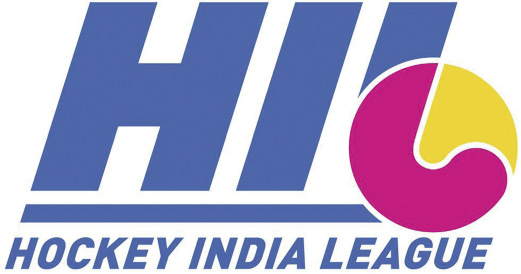The Hockey India League (HIL) is the best thing that has happened to the game of hockey in a long time – no lover of the game would dispute this, writes Ijaz Chaudhry.
The HIL was badly needed for many reasons, not least perhaps for the very survival of the sport on the bigger international scene.
Based on cricket’s Indian Premier League (IPL) model, the first edition of the HIL featured five franchised sides – Delhi Wave Riders, Mumbai Magicians, Jaypee Punjab Warriors, Ranchi Rhinos and Uttar Pradesh Wizards – all owned by big Indian business houses. The debut season of the league was played in the five home cities of the teams in January-February of 2012 over four weeks. After the league, which saw the teams play each other three times, the top four clashed in the semi-finals followed by the final.
The league was revolutionary in many ways. For the first time in hockey’s history, there was an auction of players out of which the players earned money unthinkable in hockey until now, up to $87,000. And then there were whopping prizes for the teams finishing in the first three positions ($400,000 for the winning side) as well as for individuals such as the player of the tournament and top scorer.
The league was covered and watched on a scale beyond imagination for a domestic league. Just look at some of the names who had broadcasting rights. ESPN Star Sports (ESS) signed a multi-year agreement with Hockey India. And the regional broadcasting rights were won by Star Sports, Sky Sports, Fox Sports, Ten Sports, Super Sport, OSN and One World plus there was live streaming on YouTube. The broadcasting reach was global and 41 million fans in India were joined by viewers in 146 countries around the world.
Five evenly balanced teams, each studded with some of the biggest stars of the game including seven of the top 10 FIH-rated players, were trained by great coaches and provided the spectators with one thrill after another.
The sport couldn’t have asked for more. The most ardent supporter of the game would not have even dreamt all this 12 months back. In fact, the HIL has propelled the sport from an amateurish second-tier discipline to a level where hockey can rightly hope to be a front-line glamorous and lucrative sport.
The HIL perhaps couldn’t have arrived at a better time. 2012 was the year when hockey barely managed to avoid disappearing from its greatest international theatre – the Olympic Games. The HIL, after a remarkable debut, now promises to make hockey a sport watched, followed and discussed by tens of millions across the globe. That should go a long way to ensuring hockey is not even considered among the disciplines short-listed every four years for the possible exclusion from the Olympics.
India was the best place to stage it, not only for the size and a booming economy but also for the status of hockey in the country. Despite the national team’s poor showings at the Olympics and World Cup for more than 30 years, the sport still has a vast following. The country’s national sport is part of India’s sports psyche and still enjoys strong base in some areas at least. Although, hockey is a big participant sport in many countries in Europe as well as Australia, barring Holland (population 16 million), it doesn’t enjoy significant following especially in the media. Germany and Australia’s remarkable triumphs at the two global show piece events have done almost nothing to increase the coverage.
The IPL has been a great financial success. But that doesn’t mean India’s love for any sport provides a guarantee for the investors. Badminton – the most popular racquet sport in India – is a case in point. The IBL (Indian Badminton League) also held its first edition in 2013. Coming on the back of India’s first ever badminton medal in the Olympics, and with quite a few Indians featuring high in the world rankings, it was expected the IBL would be another success story. Launched with a great fanfare and featuring all the top shuttlers of the world, except the Chinese (who were engaged in their national championships), the IBL suffered a financial loss. Only about 65-70% of the expenditure could be recovered. On the contrary, the HIL proved to be a profitable venture.
The HIL has even done better than cricket’s IPL, at least on one count. Many among the purists consider the T20 version as detrimental to the art of cricket, and they regard the IPL as the principal culprit in the projection of the format. India’s legendary spinner and former captain Bishan Bedi opines:”T20 and IPL are destroying the basic character of the game.” It has too short a time for a player to display the skills. Can you imagine three-hole golf or a 15-minute soccer match?
Unlike the IPL, the HIL isn’t a shorter format – it’s the same 70-minute game with only a slight difference. It is played over four quarters instead of two, due to television and advertising needs. The connoisseurs and ex-players alike appreciate the high pace of the game as seen in the HIL.
The International Hockey Federation (FIH) was on board with the Hockey India League right from the beginning. Yet an initiative of such a magnitude with many firsts in this sport still required further endorsement from the supreme body at the conclusion of the inaugural edition. The FIH stamped that approval in no small way with FIH president Leandro Negre, the CEO Kelly Fairweather and members of the executive board all in India to witness the finals.
Negre said: “Everybody in Europe is following the HIL. It is not only important for India, but also for the world.
“It is an FIH-sanctioned event and that is why we have allowed a window for it and all the best players of the world are playing here.”
Fairweather added: “The interest [the] HIL has generated is amazing. It has captured the imaginations of hockey around the world.”
A sport presented as a beautiful package fires the imagination of youngsters too. And through the HIL, India rediscovered the national game long overshadowed by cricket. The sale of hockey sticks grew 90% within the first month of the league.
Money talk
Many would agree the most encouraging and talked about aspect of the HIL has been the remuneration for the players.
Yuvraj Walmiki, who grew up in a shanty in Mumbai, now owns a house in Pune and is seen as one of the most stylishly dressed players on the circuit. Sardar Singh and Sandeep Singh, two of the most high-profile players in the HIL, both own a BMW now.
Birendra Lakra, who belongs to the Oraon tribe from a remote Jharkhand village and played his early hockey with tree branches, was paid a whopping $41,000 to play for the Ranchi Rhinos. He earned further from a share of the Ranchi Rhinos winner’s cheque.
Narinder Batra, the chairman of the HIL, says supporting players was the main objective of the league. “I just want to tell people that there’s respect, dignity and survival in the sport. That they can manage their families and live a good life by playing hockey, so that families don’t stop their children from taking up hockey, and children don’t run towards cricket or soccer or tennis.”
It wasn’t only Indians who did well from the HIL. Ashley Jackson, England Hockey’s glamour player, said, on getting auctioned for $73,000: “It’s great. The money will help take me through the next four-year [Olympic]cycle, may be into saving for a house.”
But it isn’t just about cash. Ranchi Rhinos and Netherlands star Floris Evers said: “It’s not about the money. We Dutch players had already talked that we would go to play in HIL even for less money. Because of the whole experience of playing in India – rubbing shoulders with the Indian youngsters, playing in front of highly-enthusiastic Indian fans – gives you a lifelong experience.
“People in Ranchi, really love hockey. We saw them dancing on stands during practice matches, and it’s a treat to watch.
“The HIL will not only help this game to be popular in India, but abroad as well. It’s being watched in The Netherlands. And as I said, not only the Indian players will learn from us, but we also will learn so many things playing with this talented bunch of youngsters.”
Talking of the youngsters, with the megastars already sold in the first season, the second auction on November 22 saw Indian juniors, as well as the foreign stars missing from the first auction, fetching excellent prices. In fact, the top pick this time around went for more than last season’s costliest player. Top billing went to talented Indian midfielder Ramndeep Singh, who only earned his first senior cap in the Asia Cup this August. He went to the Uttar Pradesh Wizards for $81,000. Among the international stars, the top bid was $71,000 for New Zealand’s Ryan Archibald. In total the six franchises (a new Kalinga Lancers franchise has been added) spent $1.37 million to buy 49 players from Australia, New Zealand, Spain, Argentina, England, Ireland, South Africa and India.
There were players who went unsold during the two auctions. But the mere fact that their names figured in the auction list should be heartening, especially for those belonging to lesser known hockey nations. Players from France and Poland, ranked 17th and 20th respectively in the world were in the auction list for the first season but found no buyers. The second auction had three players from the 29th ranked Italy. This alone should contribute in raising the profile of the sport in these places.
Like most top professional leagues of other sports, the HIL also has a transfer window. Between August 19 and September 30, Dabur Mumbai Magicians traded Sandeep Singh and Stabir Singh to Jaypee Punjab Warriors.
There were good crowds at all the venues but Ranchi stole the show. All six league matches there were sold out. The same ground hosted the finals when a large screen was erected in the adjacent soccer stadium to accommodate those who couldn’t get tickets. This has probably never been seen outside of cricket in the country.
The Rhinos have also pushed ahead to create a loyal fan base, with Jackson and team-mate Mortiz Fürste reaching out to schoolchildren and trying to offer them an alternative idol to local legend India cricket captain Mahendra Dhoni. Ranchi’s victory in the final sent 15,000 adoring home fans into delirium.
“I have never experienced this before,” said world player of the year Fürste at the awards ceremony.
They went crazy on the streets as Ranchiites partied, even making the players join them. The team bus was surrounded at city’s main square, and the intensity of the celebration would have made the uninitiated think a World Cup triumph in some sport was being celebrated.
Hockey’s status as a popular and major discipline in India is vital for the sport. The FIH acknowledges this and in no uncertain terms. This is directly linked to the performance of India’s national sides. And the HIL will definitely contribute towards that. Apart from luring more youngsters to the game, the local players in the HIL get wonderful exposure, playing with and against world’s best players while being coached by experienced coaches. Already, quite a few youngsters who starred at the HIL have debuted for the national side including Mandeep Singh, who was declared the best young player of the first HIL.
The second auction has been further good news and a delighted Batra remarked: “It is great to see that promising junior players have been bought by franchises at higher than the expected amounts which is a good sign for the future of Indian hockey”
As for that future, there are already encouraging signs. The addition of the sixth franchise shows the corporate interest is increasing. Kalinga Lancers are based in Bhubaneswar, the capital city of the Eastern province Odhisha. The state has a rich tradition of hockey and has contributed a number of players to the national team including greats like Dilip Tirkey who has been named the chief mentor and advisor for the Lancers. The side will be coached by Australian Terry Walsh – also the coach of the India team.
The choice of the team’s base perhaps couldn’t have been better as hockey is almost a religion in this eastern part of India, and there is bound to be a frenzy matching that seen in Ranchi.
Batra says:” I think there’s much more scope in hockey commercially. I don’t think we have even tapped 50 per cent of what is possible to achieve,”
What about beyond India? The IPL has had a knock-on effect. Almost all the leading cricketing nations have come out with their own franchise based Twenty20 leagues – Big Bash in Australia, Ram Slam in South Africa SPL in Sri Lanka, among others. After the resounding success of the HIL, it is hoped some other countries are also inspired to come out with similar initiatives.
Pakistan, with such a great hockey legacy and the country which gave to the world of hockey many tournaments, including the most prestigious events such as the World Cup and the Champions Trophy, would have been an ideal place for another league. However, the prevailing law and order situation in that country is the biggest hurdle. A surprising new candiadate is the one which had no national body for the sport of hockey until 2009 and only last year played its first ever international match – the gulf state of Qatar, the world’s
richest country.
Plans for an Arab Hockey League on the pattern somewhat similar to the HIL won’t be confined to Qatar only as it proposes two sides each in Qatar, UAE and Oman. The team composition is what would make the league really special. Local talent would form only one-third of the squad with the remaining two-thirds composed of international stars. Half of those overseas players would be big names of world hockey while the rest chosen from the emerging juniors on the international horizon.
The arrival of the HIL was like manna from heaven for the sport of hockey. Taking into account all its aspects, the first season of the HIL was arguably the most far reaching event in any sport during the year of 2013.




